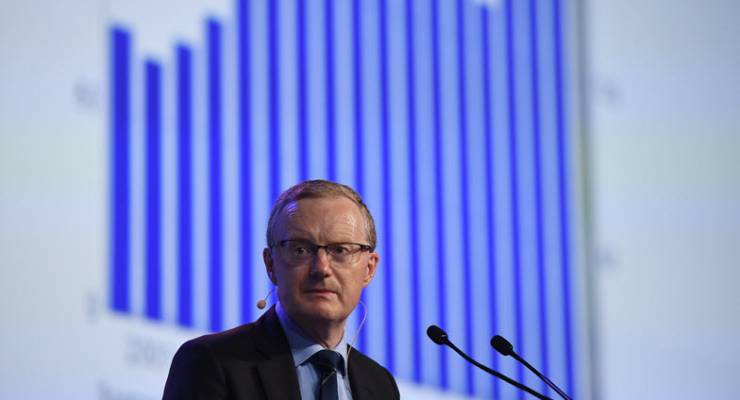
If you’re in the tiny minority of Australian who pay attention to what happened in Canberra this week, you’d think the most important matters facing the country was Operation Sovereign Strawberries and the Liberals’ ongoing civil war, which has now reached the point of Liberal MPs being exfiltrated to New York to keep them out of harm’s way. Fortunately there are adults elsewhere within the polity focused on actual challenges for Australia.
Yesterday, the Reserve Bank released its 2017-18 annual report and as always there’s a brief foreword from the governor, Phillip Lowe. In the same document last year, Lowe noted inflation was “low”, “wage growth remains low” (wages were mentioned twice), there was “a reduced sense of job security”, and “over the year, the Board has paid close attention to developments in household balance sheets and housing markets”. But the governor confidently predicted “the coming year is likely to see better growth in the Australian economy” which it did, with GDP growing at an annual rate of 3.4% at the end of 2017-18 against 1.9% in 2016-17.
This year, the list of negatives has narrowed. Overall, things are better: an “improvement in the global environment is helping the Australian economy. Higher commodity prices and stronger employment growth have provided a welcome boost to incomes. Economic growth has gradually picked up and inflation is moving closer to the Reserve Bank’s target. Higher levels of public and private investment are also supporting the economy.”
But Lowe singled out three concerns: first, “the risk to the global economy from a move towards protectionism. Australia is a major beneficiary of the open, rules-based international system and has a strong stake in this system continuing.” A second issue is subdued growth in wages: “The slow growth in wages has boosted the number of Australians with a job, but has also led to slower income growth for many individual households and less inflation pressure than otherwise.” And “a third issue was the high level of household debt in Australia, which carries certain risks”.
Lowe says the Bank is working with other members of the Council of Financial Regulators (Treasury and what might, in the wake the royal commission, be called the coalition of the unwilling — ASIC and APRA) “to ensure that lending standards are appropriate for this environment”. And he once again made a pointed reference to “stability” — code for rejecting the nonsensical calls from some economists and the Financial Review for a punitive monetary policy strikes on Australian workers and consumers: “Over this period, the Bank has sought to be a source of stability and confidence while further progress is made in having inflation return to target and the Australian economy move closer to full employment.”
In Canberra, the main discussion of rising protectionism this week came from Bill Shorten, whose response to the US-China trade war is to call for Australia to raise our trade barriers, via anti-dumping provisions, while the government crowed about passage of the damaging, and economically negligible, Trans Pacific Partnership. There was certainly no awareness of the fact that the unilateral lowering of trade barriers will yield the greatest economic benefits for Australian workers and consumers.
Josh Frydenberg mentioned wages in the media blitz at the end of last week, but the only thing he had to offer was a continuation of the government’s insistence that wages will magically start growing again soon. Just like they were going to in 2015, 2016, 2017, and this year.
Still, thank goodness that in Canberra we’re making sure no strawberry, or bullied MP, is left behind.









We have hit the high point on growth. A bit like the property market in the big cities, it will leak slowly to a lower level until interest rates rise on fear of overpriced sharemarkets late in 2019.